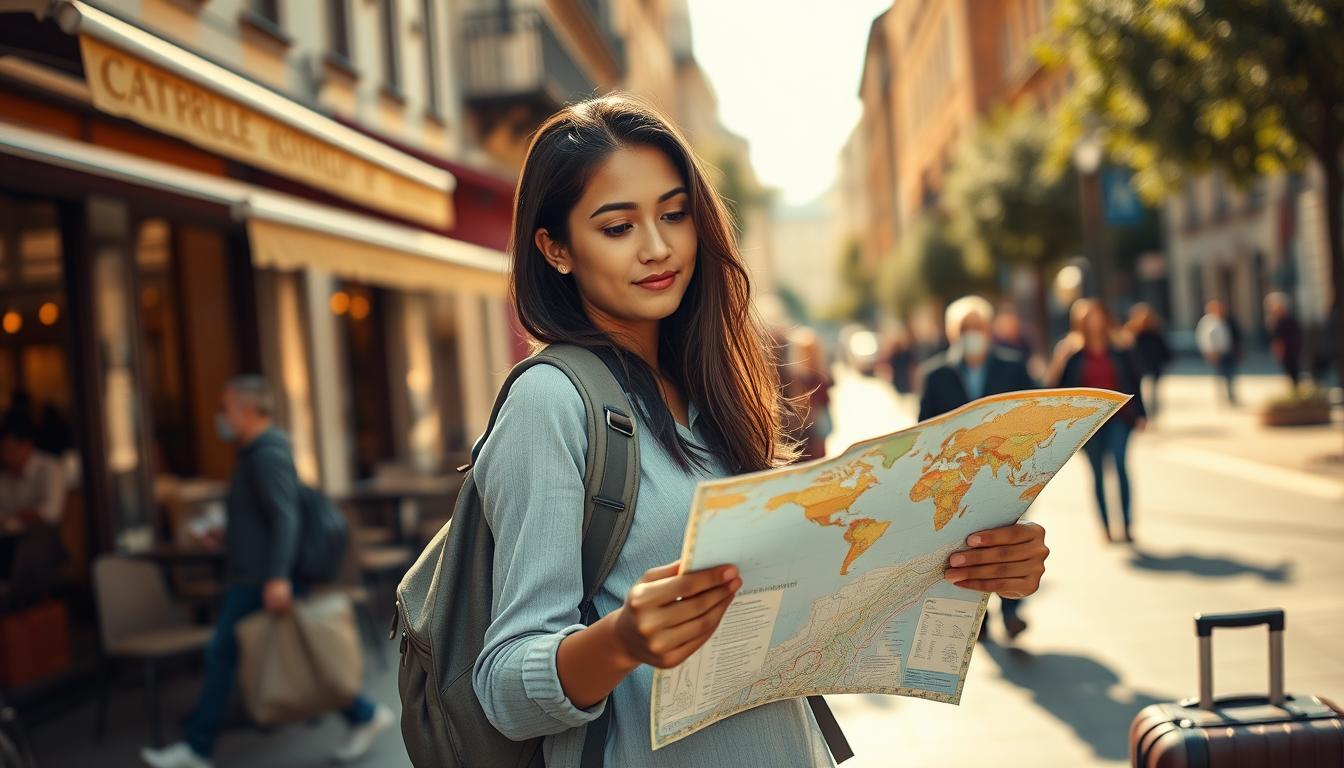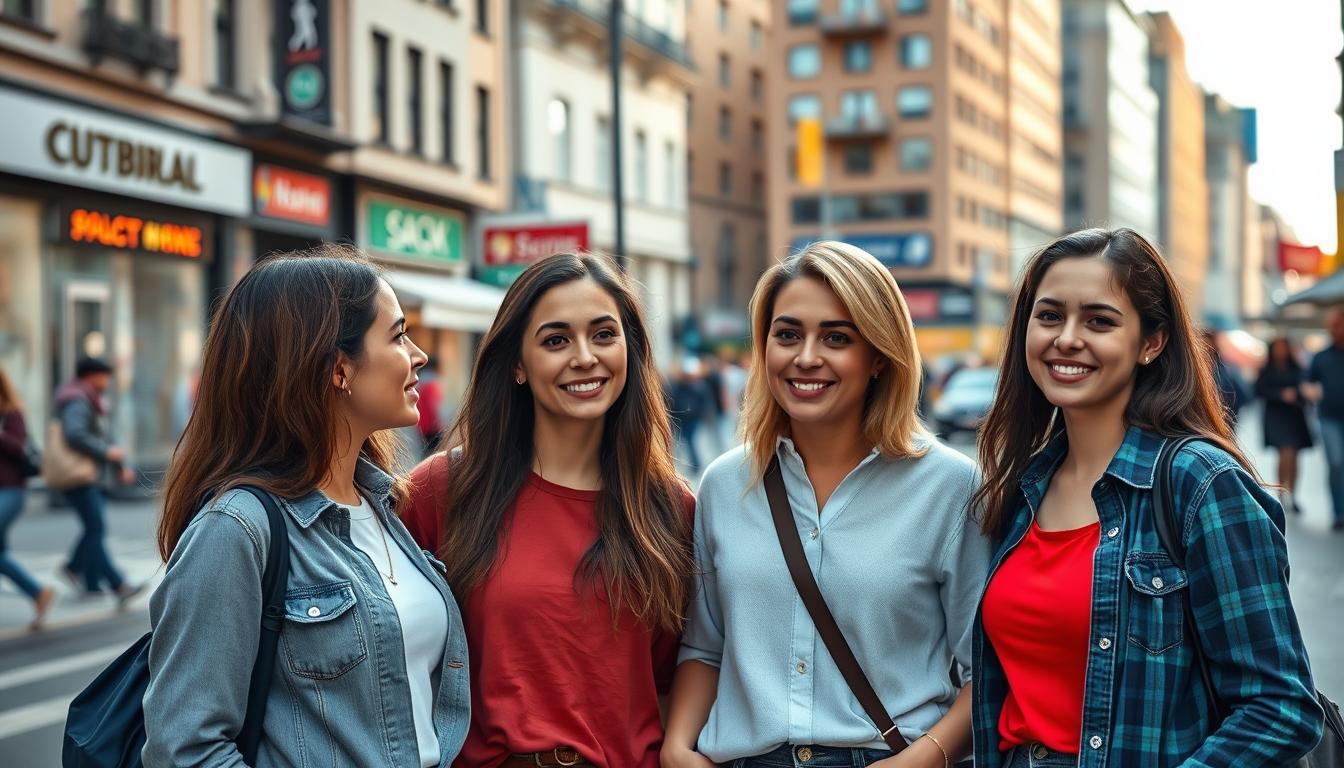Exploring new places should feel exciting, not stressful. Whether you’re planning a solo adventure or a group trip, knowing how to stay prepared is key to enjoying every moment. This guide blends real-world strategies and expert insights to help you navigate unfamiliar destinations with confidence.
We’ve all heard stories about unexpected challenges—lost passports, cultural misunderstandings, or health hiccups. That’s why smart preparation matters. From respecting local traditions to packing the right tech tools, small steps make a big difference in staying secure while embracing new experiences.
Here, you’ll find actionable advice curated from seasoned globetrotters and trusted sources. Learn how to research destinations effectively, blend in seamlessly, and handle emergencies calmly. Let’s turn worries into wisdom—so you can focus on creating unforgettable memories.
Understanding Local Customs and Norms
Stepping into a new culture feels like unlocking a secret code—once you learn the rules, everything clicks into place. Respecting traditions isn’t just polite; it’s how you connect meaningfully with communities. A little research goes a long way in avoiding awkward moments and showing appreciation for local ways of life.
Cultural Dress and Behavior
What you wear speaks volumes. In many destinations, modest clothing like knee-length skirts or covered shoulders shows respect. For example, visiting temples in Southeast Asia often requires covering your legs, while bustling markets in Morocco might feel more welcoming with loose-fitting attire.
Small gestures matter, too. In Japan, bowing slightly when greeting someone is customary. Learning a few phrases in the local language, like “thank you” or “hello,” can instantly warm interactions. These efforts show you value the culture and its people.
Local Laws and Social Etiquette
Did you know chewing gum is illegal in Singapore? Or that tipping isn’t expected in Iceland? Laws and social norms vary wildly. Review official government websites or trusted cultural guides before arriving—they’re the best sources for accurate information.
| Destination | Dress Code | Unique Etiquette |
|---|---|---|
| Japan | Conservative in temples | Remove shoes indoors |
| UAE | Cover shoulders/knees | Avoid public affection |
| Italy | Smart casual dining | Greet with cheek kisses |
When in doubt, observe what locals do. Notice how they queue, interact, or dress for different occasions. This simple strategy helps you blend in naturally while honoring the destination’s unique rhythm.
Planning for Healthcare & Health Essentials Abroad
Your well-being is your greatest travel companion—pack it wisely. Healthcare systems vary globally, and what’s easily available at home might be scarce elsewhere. A little prep work ensures you’re ready for anything, from minor hiccups to unexpected situations.
Packing Critical Health Items
Start with essentials you can’t replace: prescription meds, preferred pain relievers, and specialty products. Many countries don’t stock familiar brands of menstrual care or contraceptives. Bring enough for your trip plus extras—delays happen.
Always carry a doctor’s note for medications. Some destinations require documentation for even common drugs like allergy pills. Check local health laws too—certain over-the-counter items might be restricted.
- Customize your health kit: Include antihistamines, rehydration salts, and bandages
- Add region-specific items: Mosquito repellent for tropical areas, altitude sickness pills for mountain trips
- Keep insurance details handy: Policy numbers and emergency contacts
| Country | Healthcare Tip | Item to Pack |
|---|---|---|
| Thailand | Pharmacies widely available | Antibacterial wipes |
| France | English-speaking doctors common | Prescription copies |
| Peru | Altitude affects many visitors | Diamox tablets |
Double-check your insurance covers international care. Many plans exclude certain countries or require upfront payments. Consider supplemental travel insurance if your current policy has gaps—it’s worth the peace of mind.
Navigating Public Transportation and Solo Travel
Moving through a new city can be thrilling—until you realize you’re heading the wrong way on a tram line. Getting around efficiently requires strategy, especially when traveling alone. Let’s explore how to master local transit while keeping your confidence intact.
Evaluating Local Transit Options
Public transportation systems vary widely. In Tokyo, trains run like clockwork, but rural areas might have sporadic bus schedules. Always check route maps and timetables online before arriving. Apps like Citymapper or local transit websites provide real-time updates.
Avoid informal options like unmarked vans or hitchhiking. Stick to well-lit stations and official stops during daylight hours. If you’re unsure, ask hotel staff or trusted locals for route recommendations.
Using Ride-Share and Licensed Taxis
App-based services like Uber or Grab offer built-in security features. Driver profiles, license plates, and GPS tracking create accountability. I always compare ride-share prices with licensed taxi companies for the best deal.
When hailing cabs, look for official markings: meters, company logos, or driver IDs. In cities like New York or London, brightly colored taxis are regulated and safer. Keep your phone visible during rides—it subtly signals you’re tracking the journey.
| Transport Type | Safety Feature | Best For |
|---|---|---|
| Metro | Crowded during rush hour | Short city distances |
| Ride-Share | Real-time tracking | Late-night trips |
| Licensed Taxi | Regulated fares | Airport transfers |
Pre-book airport transfers through reputable companies when arriving after dark. For solo travel adventures, knowing your transit plan reduces stress and keeps you in control.
Securing Your Lodging and Accommodations
Your choice of where to stay shapes your entire experience. A well-chosen hotel or rental becomes your home base—a place to recharge and regroup. Prioritizing security doesn’t mean sacrificing comfort; it means making informed decisions that let you relax fully.
Choosing Safe Neighborhoods
Location matters more than luxury. Research areas with low crime rates and easy access to public services. Sites like NeighborhoodScout or local expat forums reveal insights you won’t find in brochures. Look for streets with active cafes and families—these often indicate welcoming communities.
Always verify hotel security features before booking. Reliable options have 24/7 front desks, in-room safes, and verified guest reviews mentioning “felt secure.” Avoid ground-floor rooms in remote locations. When using vacation rentals, confirm the host’s reputation through multiple platforms.
| Hotel Feature | Why It Matters | Examples |
|---|---|---|
| 24/7 Staff | Immediate assistance | Marriott, Hilton |
| Secure Storage | Protects passports | In-room safes |
| Central Location | Near help if needed | Downtown districts |
Use first initials during check-in to maintain privacy. Keep your passport locked away, carrying a copy instead. Know the nearest police station and clinic—save their addresses offline. These steps take minutes but build layers of protection around your temporary home.
Trust your gut. If a place feels off, even with great reviews, explore other options. Your peace of mind is worth that extra search time.
Practical Personal Safety Strategies for Everyday Travel
Confidence starts with smart habits. Simple routines create powerful shields against unexpected emergency situations. Let’s explore how to stay sharp while keeping your independence intact.
Your Safety Network Matters
Program local police and embassy numbers into your phone before arriving. Share your daily plans with someone back home through apps like TripIt. In one recent case, a hiker’s shared location helped rescuers find her within hours after a trail injury.
Carry a folded emergency card in your wallet. Include blood type, allergies, and contacts. I keep mine behind my ID—easy to find if others need to assist me.
Smart Tools, Strong Responses
A loud whistle attached to your bag draws immediate attention. Pepper spray (where legal) gives quick options if someone invades your space. Practice saying “Back off!” firmly—your voice is your first defense.
Notice exits and well-lit areas when entering new spaces. Last month in Barcelona, spotting a crowded café helped me avoid a suspicious case near an empty alley. Trust your gut—it’s smarter than you think.
| Tool | Best Use | Tip |
|---|---|---|
| Personal Alarm | Crowded areas | Test volume monthly |
| Door Stop Alarm | Hotel rooms | Works on carpet/tile |
| Flashlight Pen | Night navigation | Doubles as writing tool |
Review these things nightly: Where’s your phone charger? Do you have cab money? Small checks keep you ready for emergency moments. Remember—most head-on approaches can be avoided by crossing the street early or changing pace.
Stay aware without overthinking. Scan faces, not just screens, when walking. Keep one earbud out to hear your surroundings. These head-up habits let you enjoy adventures while staying in control.
Travel Safety for Women: Essential Tips
Navigating busy streets and markets requires both curiosity and caution. Solo explorers often thrive in vibrant spaces—but staying sharp helps you enjoy them fully. Let’s unpack how to blend awareness with adventure.
Staying Aware in Crowded Places
Keep one hand free in packed areas. A friend once avoided pickpockets by wearing her crossbody bag under her jacket. Scan for exits when entering festivals or transit hubs—knowing escape routes builds confidence.
Try these tips to stay grounded:
- Pause periodically to check surroundings without staring (sunglasses help)
- Use reflective surfaces like store windows to monitor behind you
- Carry a decoy wallet with expired cards for quick distraction if needed
When approached, respond with polite brevity. A solo female traveler in Istanbul deflected invasive questions by smiling and saying, “I’m meeting friends later.” This tactic preserves privacy while maintaining courtesy.
Trusting Your Instincts
Your body often senses danger before your brain processes it. Last year in Rome, I left a taxi immediately when the driver refused to start the meter—a decision that later matched local advisories.
Notice these signals:
- Sudden tension in your chest or shoulders
- Locals avoiding certain streets after dark
- Overly eager strangers offering unsolicited help
Create exit plans for social situations. At a café? Claim a seat near staff. In markets, blend with families or groups. These choices help you feel comfortable while exploring independently.
| Situation | Quick Response | Outcome |
|---|---|---|
| Unwanted follower | Enter a store, ask for help | Gain assistance quickly |
| Aggressive vendor | Say “No, thank you” firmly | Discourage persistence |
| Lost in crowds | Find landmarks or info desks | Regain orientation |
Remember: Solo female travel isn’t about constant vigilance—it’s about smart preparation letting you relax into the journey. Carry yourself like someone who belongs, and the world often mirrors that confidence back.
Leveraging Technology and Connectivity on the Road
Your smartphone transforms into a lifeline when exploring unfamiliar territory. Modern tools bridge language gaps, track routes, and summon help—all from your pocket. We’ve moved beyond paper maps and guidebooks; today’s tech lets you navigate confidently while staying connected.
Essential Safety Apps
Curate your phone with purpose-built tools. TripIt organizes itineraries while Noonlight sends emergency alerts with one tap. Google Translate’s camera mode deciphers street signs instantly—no wifi needed. I test these before every trip to ensure smooth operation abroad.
| App | Best For | Pro Tip |
|---|---|---|
| Maps.me | Offline navigation | Download maps pre-trip |
| RedZone | Crime alerts | Set location-based notifications |
| UrSafe | Voice-activated SOS | Pair with smartwatch |
Internet Access and Communication
Stay online without roaming fees. Services like UBIGI offer affordable eSIM data plans covering 150+ countries. Purchase before departure to activate upon landing. Local SIM cards work too—airport kiosks often provide best rates.
Using GPS and Location Services
Share real-time whereabouts with trusted contacts through WhatsApp or Find My. Offline maps prevent getting stranded without signal. During a recent Lisbon visit, Maps.me guided me through winding alleys when cellular data failed.
Remember: Technology supports—not replaces—awareness. Charge devices nightly and carry portable batteries. With these digital allies, you’re equipped to handle surprises and savor discoveries.
Recognizing and Avoiding Dangerous Situations
Ever felt that subtle unease when someone’s questions feel too personal? Those moments demand quick thinking. Spotting red flags early helps turn potential risks into avoided scenarios. Let’s break down how to read situations clearly and act decisively.
Trust Your Spidey Sense
Strangers crossing boundaries often show patterns. Watch for people who:
- Ask where you’re staying or insist on “showing” hidden spots
- Ignore personal space despite clear body language
- Offer unsolicited gifts or overly persistent help
During a trip to Mexico City, a friend noticed a man following her between market stalls. She entered a bakery, asked staff for help, and avoided escalation. Key lesson? Reacting quickly matters more than being polite.
| Red Flag | Smart Response | Outcome |
|---|---|---|
| Pushy questions | Give vague answers | Discourages further probing |
| Unmarked vehicles | Use licensed transport | Ensures accountability |
| Late-night approaches | Head to lit areas | Reduces vulnerability |
Time your exits. If someone’s behavior spikes your heart rate, leave immediately. Practice phrases like “I’m meeting friends” or “No, thanks” to shut down interactions. Carry a charged phone to call trusted contacts or authorities if needed.
Remember: Most people you meet are genuine. But recognizing the exceptions keeps your trip smooth. Stay alert, not anxious—you’ve got this.
Budget Travel and Safety Considerations
Smart adventurers know great experiences don’t require big spending—just clever planning. Balancing affordability with security starts with prioritizing what matters most. Let’s explore how savvy explorers protect themselves without draining their wallets.
Balancing Cost and Security
Hostels with 24/7 reception often cost less than hotels but offer key safety features. A family visiting Mexico City chose a centrally located guesthouse with verified reviews over a cheaper, isolated rental. Their research paid off when staff helped resolve a late-night noise issue quickly.
Use these strategies to stretch your budget wisely:
- Book transit through official apps—they often include driver ratings and route tracking
- Join group tours in unfamiliar cities to split costs while staying visible
- Pack reusable water filters to avoid buying bottled water daily
| Strategy | Cost Saver | Safety Booster |
|---|---|---|
| Accommodations | Hostel dorm beds | Lockers & staffed lobbies |
| Transportation | Shared shuttles | Licensed group transfers |
| Emergency Fund | $50-$100 buffer | Covers last-minute taxis/safe stays |
Always cross-check reviews on multiple platforms. A solo traveler in Bangkok avoided a poorly lit Airbnb after noticing three separate mentions of broken locks. Budget-conscious trips thrive when you invest time in research—not just money.
Smart Approaches to Solo Female Travel Safety
Adventure thrives on independence, but smart connections make it sustainable. For those exploring alone, blending intuition with intentional networking transforms challenges into confidence boosters. Let’s explore how to navigate personal questions and build supportive alliances on the road.

Mastering the Art of Deflection
Curiosity about your solo status often comes from cultural differences, not malice. When asked, “Why are you alone?” try responses like:
- “Meeting friends later—they’re finishing work”
- “Just exploring before my group arrives”
A traveler in Marrakech avoided unwanted attention by mentioning her “local host family.” These white lies protect privacy while keeping interactions positive.
Creating Your Travel Tribe
Start connections early. Chat with hotel concierges about nearby cafes—they’ll remember you if issues arise. Join free walking tours to meet other explorers. I once teamed up with two backpackers in Kyoto after a temple tour; we shared dinner and transit tips for days.
| Connection Type | Safety Benefit | Example |
|---|---|---|
| Hotel Staff | Local emergency help | Storing valuables securely |
| Tour Guides | Culturally-aware advice | Identifying safe routes |
| Fellow Explorers | Shared vigilance | Group transit after dark |
Trust local experts—market vendors or museum docents often share neighborhood insights most guidebooks miss. These relationships enrich experiences while creating organic safety nets. Remember: Solo doesn’t mean solitary. Your next ally could be a smile and introduction away.
Conclusion
The world becomes yours when curiosity meets careful planning. Every journey thrives on a foundation of research, cultural respect, and trusted tools. By understanding local norms and securing essentials—from insurance details to emergency contacts—you create space for discovery without distraction.
Stay sharp by blending intuition with preparation. Share itineraries with friends, keep digital backups of your passport, and prioritize neighborhoods that align with your comfort zone. Small choices, like learning basic phrases or choosing regulated transport, build layers of confidence.
Remember: Awareness isn’t about fear—it’s freedom. Whether navigating bustling cities or quiet villages, let knowledge guide your steps. The most rewarding explorations happen when you feel prepared to embrace the unexpected.
Ready to wander wiser? Take a moment to review your checklist, update your health kit, and share these strategies with fellow adventurers. Here’s to journeys where every challenge becomes a story, and every return home sparks plans for the next horizon.


